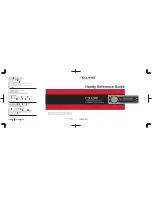
- 9 -
Approximate Active Antenna Power Line Lengths (4 active antennas on at any one time).
Minimum Copper
Wire Gage (AWG)
Length
18
300 Feet
16
500 feet
12
1,200 feet
10
2,000 feet
Receive Eight Circle Active Vertical Elements
The
DXE-RCA8C-SYS-4P
Eight Circle Array is supplied with DX Engineering model
DXE-
ARAV4-8P
Active Receive Verticals package, which consists of eight identical
ARAV4-1
Active
Receive Vertical Antennas. Featuring the
AVA2
Active Matching Units, the
ARAV4-1
offers
excellent broadband receiving performance from 100 kHz to 30 MHz. In addition, the
ARAV4-1
provides a clean, low profile installation using aluminum antenna elements. DX Engineering’s
unique design makes it vastly superior to other amplified and traditional active antennas in both
strong signal handling and feedline decoupling. You get significantly better weak signal reception
due to lower spurious signal interference and reduced noise.
The
ARAV4-1
Active Receive vertical matching units ground the antenna element when power is
turned off. The active antennas allow installations with spacing from transmit antennas less than 1/2
wavelength but more than 1/10 wavelength (on the lowest frequency). Close spacing of the array to
transmitting antennas can be done, but will impact overall receive array system performance.
Sites
without sufficient land area for proper spacing should use these verticals, which may be installed in
close proximity to transmitting antennas (1/10-wavelength of the lowest transmitting frequency).
This is possible, provided the active units are powered off at least 5 ms before transmitting. An
optional sequencer such as the
should be used to ensure the correct transmit to receive
switching
Your eight identical
DXE-ARAV4-1
Active Vertical Antennas must be mounted so they are self-
supporting and insulated from the mount. A ground rod may be used as the ground mount. The
vertical element must be connected only to the positive terminal of the
AVA2
Active Matching
Units, and the negative terminal must be connected to at least one ground rod. Two ground rods
may be needed in some soils. The Active Receive Verticals normally do not need ground radials,
however, depending upon the conductivity of the soil, in sandy soil or rocky soil installations, wire
radials may be required.
The Active Receive Verticals should be installed with their feed points as close to the ground as
possible but above any standing water. The level of snow cover over the feedpoint and the active
vertical is not an issue. If you are planning to use the array on the 160 meter band, a jumper in the
active antenna matching units may be changed to limit the Active Matching Unit response to the
AM Broadcast Band. Placing a jumper on
L1MF
will peak the array sensitivity response for use on
160 meter, with little effect on 80 meters. For access to the jumpers in the Active Matching Units,
remove the 2 screws on each side of the case and remove the bottom. The circuit board and jumper
headers will be visible, as shown in
Figure 6
. By default, there are no jumpers across any pins.
Summary of Contents for DXE-RCA8CB-SYS-4P
Page 31: ...31 NOTES...










































